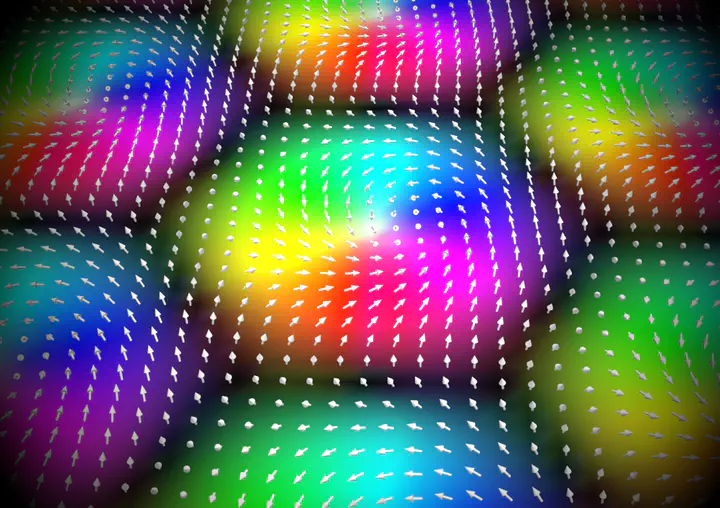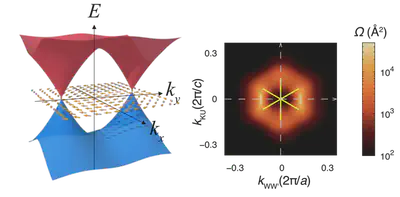Quantum Materials Science

Novel Functions for Next Generation Devices
As ’the 21st century is the age of quantum’, devices based on quantum technology, such as quantum computers, are being invented at an ever-increasing rate. We are conducting research on advanced quantum material functions that will pioneer innovative devices of the future that will cause such a paradigm shift.
Topological Materials Design
-Emargent properties in topological materials-
The electronic states of their materials fundamentally explain the properties of our familiar electronic devices. In recent years, many exciting discoveries have emerged due to the concept of topology in electronic structure. These non-trivial topological properties could provide the basis for conceptually new spintronics and thermoelectric applications.
By means of first-principles calculation, we aim to predict these non-trivial electronic properties in novel materials and connect them to material design.

Related Publication
-
Susumu Minami, Fumiyuki Ishii, Yo Pierre Mizuta, Mineo Saito
First-principles study on thermoelectric properties of half-Heusler compounds CoMSb (M = Sc, Ti, V, Cr, and Mn)
Applied Physics Letters 133, 032403 (2018) -
Akito Sakai, Susumu Minami, Takashi Koretsune, Taishi Chen, Tomoya Higo, Yangming Wang, Takuya Nomoto, Motoaki Hirayama, Shinji Miwa, Daisuke Nishio-Hamane, Fumiyuki Ishii, Ryotaro Arita, Satoru Nakatsuji
Iron-based binary ferromagnets for transverse thermoelectric conversion
Nature 581, 7806 (2020) -
Y. Okamura, S. Minami, Y. Kato, Y. Fujishiro, Y. Kaneko, J. Ikeda, J. Muramoto, R. Kaneko, K. Ueda, V. Kocsis, N. Kanazawa, Y. Taguchi, T. Koretsune, K. Fujiwara, A. Tsukazaki, R. Arita, Y. Tokura, Y. Takahashi
Giant magneto-optical responses in magnetic Weyl semimetal Co3Sn2S2
Nature Communications 11, 4619 (2020) -
Susumu Minami, Fumiyuki Ishii, Motoaki Hirayama, Takuya Nomoto, Takashi Koretsune, Ryotaro Arita
Enhancement of the transverse thermoelectric conductivity originating from stationary points in nodal lines
Physical Review B 102, 205128 (2020)
Dynamics of Topological Quasi-Particles
-Mechanical behavior of skyrmion crystals-
In nanoscale materials, magnetic moments and electric polarizations form vortex-like topological ordering when a specific external field is applied. These are called “skyrmions” or “merons”, and since each one behaves like a single particle (quasiparticle) and can be driven by a very small electric current, they are expected to be applied to next-generation power-saving information devices.
Here, we are elucidating the dynamic behavior of skyrmion quasiparticle crystals and proposing methods to control them for device applications.

Related Publication
-
Yu Wang, Takahiro Shimada, Jie Wang, Takayuki Kitamura, Hiroyuki Hirakata
The rectilinear motion of the individual asymmetrical skyrmion driven by temperature gradients
Acta Materialia, 221, 117383 (2021) -
Yu Wang, Takayuki Kitamura, Jie Wang, Hiroyuki Hirakata, Takahiro Shimada
Mechanical acceleration and control of the thermal motion of a magnetic skyrmion
Physical Review Applied, 18, 014049 (2022)